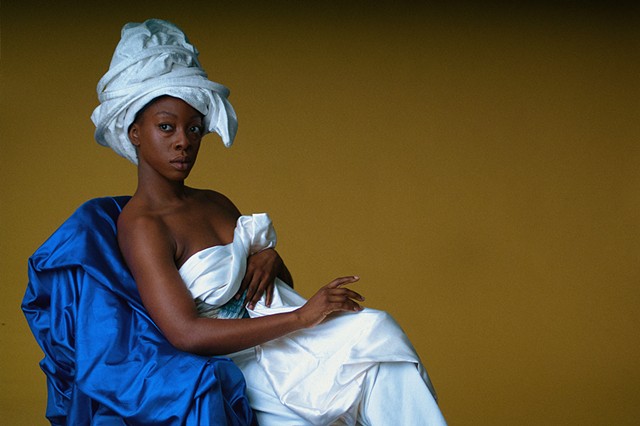Tignon
“No he ganado mi libertad sobre las espaldas”, is based on the original oil painting by Marie Guihelmine Benoist (1768 - 1826), titled Portrait d'une Négresse. Benoist is a French female artist who comes from an aristocrat lineage and belong to a small elite group of professional female painters. Marie was married to a lawyer who was once the adviser of King Louis XVI, she studied under Jacques-Louis David and Elisabeth Vigee Le Brun, who was the court painter to Queen Marie Antoinette. Portrait d'une négresse was later bought by King Louis XVIII and can be found on the second level of the Louvre Museum in their neoclassical collection.
Marie painted the unknown black female figure, who was probably a servant brought from the Antilles by her brother in law, in a time when it was considered “ungrateful” to paint black skin. People of African descendant in French society were considered non-French and categorized as “exotic” or “oriental”, never to be recognized as participants in forming modern French society. Influence by Le Brun, Benoist painted the figure with her right breast partially exposed to represent liberty. During this period the abolition of slavery briefly occurred between a 1794 emancipation decree to the restoration of slavery in 1802. It is said that the painting represents in part as a tribute to the French emancipation of slaves and as a celebration of the hopes expressed in many emancipation prints with inscriptions of “moi égal à toi” (free like you), in which several prints represent females.
Across the Atlantic in New Orleans a free woman of color went on record in court in 1795 stating “No he ganado mi libertad sobre las espaldas”, translating to “I did not earn my freedom on my back”, in which the author illustrates the need to dispelled stereotypes that are insulting to black and mixed-blood women as well as to the men with whom they were allied. The Spanish government’s edict of the Tignon did not consider the established relationships among the ethnically diverse Louisiana community. The free women of color population were of all status: mothers, sisters, daughters, nurse to the many sick and dying in the colony, in addition to manumitted slave concubines who also function as informal wives, all of which earned their freedom through many different paths of hard work, that included getting their non-white children recognized by their white fathers. Steps such as this highlights the significance the free women of color had in shaping modern society during the 18th century in Louisiana.
Copyright Owner: Chesley Antoinette
Photo Credit: JD Moore
Stylist: Courtney Guy
Make-up: Steven Hill
Model: Hathor Hendrix
Edition of 5
